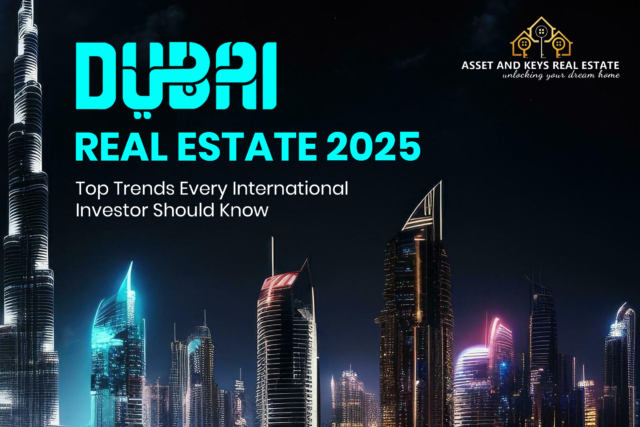
Dubai’s real estate market has long captured the attention of investors and industry experts worldwide. With its iconic skyline, luxurious developments, and consistent growth, questions around the sustainability of the market are frequent. One of the most common concerns is whether the Dubai property market is heading towards a bubble. In this article, we break down the elements that might contribute to this perception and examine the current state of Dubai’s real estate landscape.
What is a Real Estate Bubble?
A real estate bubble refers to a situation where property prices increase at an unsustainable rate due to speculation, excessive demand, or market distortions. When the market corrects, property prices fall, often leading to substantial financial losses for investors. Understanding how a bubble forms and what signals to look for can help investors make informed decisions.
Current Market Dynamics
To determine whether Dubai’s real estate market is a bubble, we need to consider several critical factors:
Price Trends and Volatility
Dubai’s property market has experienced periods of rapid price growth followed by price corrections. More recently, the market has shown signs of stabilization after years of fluctuating prices. By analyzing current price trends alongside historical data, we can understand whether the market is entering a phase of sustainable growth or showing signs of potential overheating.
Supply and Demand
The relationship between supply and demand is central to assessing the overall health of the market. Dubai has witnessed an increase in new property developments, which has led to a rise in supply. However, strong demand driven by Dubai’s global business status, tourism, and expatriate population helps balance the market, reducing the chances of a bubble.
Economic Factors
Dubai’s economy, now diversified across various sectors such as tourism, trade, finance, and technology, plays a crucial role in maintaining stability in the real estate sector. The city’s economic growth continues to support property demand, making it less susceptible to an external economic shock that might trigger a bubble.
Indicators of a Potential Real Estate Bubble
There are several warning signs that can suggest the presence of a bubble in the real estate market:
Excessive Speculation
When property purchases are driven by the expectation of rapid price increases rather than fundamental demand, it can create an environment ripe for a bubble. Close monitoring of investor behavior and market sentiment can help gauge whether speculative buying is contributing to price escalation.
Rapid Price Escalation
Sudden and unsustainable increases in property prices are often a key indicator of a bubble. If price growth surpasses wage growth and broader economic indicators, it could be a signal that prices are outpacing economic fundamentals.
High Leverage and Debt Levels
High levels of mortgage debt and borrowing in the property market can exacerbate bubble conditions. If property buyers are relying heavily on borrowed funds to finance purchases, any change in market conditions can trigger a correction.
Insights into Dubai’s Real Estate Market
Regulatory Measures
The Dubai government has taken significant steps to stabilize the real estate market. Stricter regulations on mortgage lending, transparency in property transactions, and incentives for foreign investors have all helped mitigate risks and prevent market imbalances. These efforts play a key role in ensuring long-term market stability.
Diversified Demand
Dubai attracts a wide range of investors, from expatriates and multinational corporations to high-net-worth individuals. The city’s appeal as a global business and tourism hub sustains continuous demand for both residential and commercial properties, further reducing the risk of a speculative-driven bubble.
Infrastructure and Development
Ongoing investments in infrastructure, such as new transport systems and commercial hubs, support long-term property value appreciation. These large-scale developments are a testament to Dubai’s long-term vision, reinforcing the resilience of the market and its ability to weather short-term fluctuations.
Historical Context
Dubai’s real estate market has gone through several boom-and-bust cycles in the past. By understanding these past trends, investors can better assess the current market situation and differentiate between short-term corrections and long-term sustainable growth.
Expert Insights and Market Sentiment
Real Estate Analysts
Real estate analysts provide invaluable insights into the market by forecasting trends based on data and historical patterns. These expert opinions help investors understand whether the current conditions align with past cycles or suggest potential for overvaluation.
Investor Sentiment
Feedback from both local and international investors also provides a snapshot of market confidence. High levels of investor confidence typically indicate a stable market, while increased caution or pessimism can signal potential risks. With Dubai’s diverse investor base and robust demand, confidence remains high in the market.
Conclusion
Determining whether Dubai’s real estate market is in a bubble requires an in-depth analysis of multiple factors, including price trends, supply-demand dynamics, economic indicators, and regulatory measures. Although Dubai’s property market has witnessed rapid price increases and corrections in the past, the current outlook is much more stable, supported by strong demand, government intervention, and a diversified economy.
At Asset and Keys Real Estate LLC, we encourage investors to approach Dubai’s real estate market with a data-driven strategy, focusing on long-term growth potential. By staying informed and seeking expert advice, investors can confidently navigate the market’s complexities and make profitable investment decisions. Contact us today to explore investment opportunities and keep up with the latest trends in Dubai’s real estate sector.





Leave a Reply